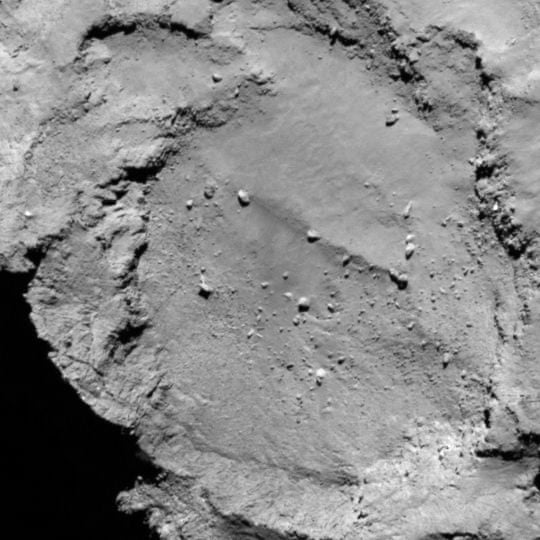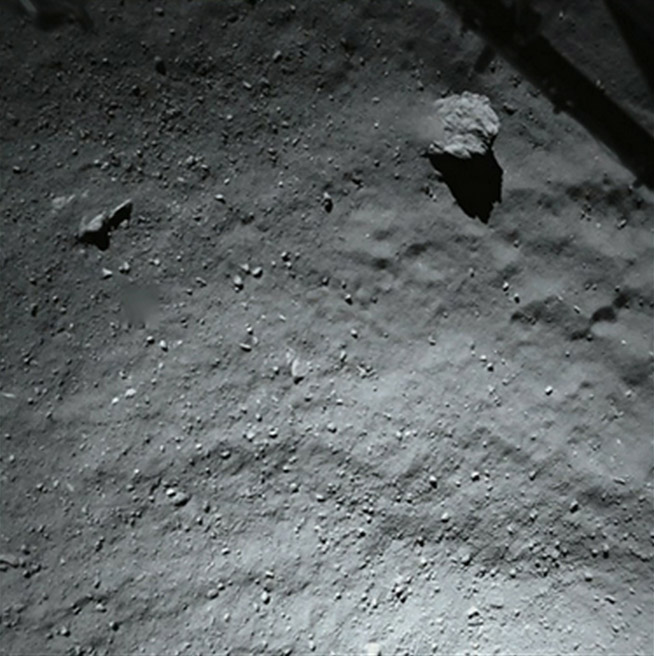- Joined
- Jul 23, 2012
- Messages
- 1,899
- Reaction score
- 872
Sweet.

There's a problem that's getting zero play. The anchoring harpoons didn't fire upon landing. Elsewhere I read that upon separation from Rosetta, the thruster mounted on top of the lander which is meant to fire the instant the harpoons fire to prevent the recoil of the lander off of the surface indicated that it had issues. It could easily be that the harpoon anchors didn't fire because the lander control software would not fire them if the thruster was inop. Strange that that is not mentioned in this post from the lander's twitter account:
https://twitter.com/Philae2014/status/532579550069551104
"I’m on the surface but my harpoons did not fire. My team is hard at work now trying to determine why."
If the harpoon anchors aren't eventually fired, comet outgassing could at some point blow the lander away from the surface.
Winston, I noticed earlier on the ESA Rosette website about the harpoon anchors, but later it was taken down. I just assumed the problem was fixed, but maybe I was wrong.There's a problem that's getting zero play. The anchoring harpoons didn't fire upon landing. Elsewhere I read that upon separation from Rosetta, the thruster mounted on top of the lander which is meant to fire the instant the harpoons fire to prevent the recoil of the lander off of the surface indicated that it had issues. It could easily be that the harpoon anchors didn't fire because the lander control software would not fire them if the thruster was inop. Strange that that is not mentioned in this post from the lander's twitter account:
https://twitter.com/Philae2014/status/532579550069551104
"Im on the surface but my harpoons did not fire. My team is hard at work now trying to determine why."
If the harpoon anchors aren't eventually fired, comet outgassing could at some point blow the lander away from the surface.
The Rosetta team's web page here:Winston, I noticed earlier on the ESA Rosette website about the harpoon anchors, but later it was taken down. I just assumed the problem was fixed, but maybe I was wrong.
Where'd you find that kind of detail? I'd love to read anything else they have there.It sank 4cm into the surface. In that low gravity, that's gotta mean the surface is really soft. Wonder if harpoons will do any good?
Unfortunately, it seems to have bounced into a ravine and is in shadow too often as the comet rotates. It's absolutely amazing to me how hard it is to find hard tech info on this. Space.com doesn't even mention anything other than the lander bounced, not giving any kind of clue that it bounced 1km back into space on the first bounce!From what I was reading earlier, it sounded like the onboard batteries won't last all that long, so they don't have tons of time to 'debug' and "fix" stuff.
The latest and it sucks:
Rosetta: concerns for comet lander after uneven landing (with some nice photos)
https://www.bbc.com/news/science-environment-30034060
Pictures taken by Philae of its surroundings show it pressed up against what appears to be a hard wall of some kind.
Telemetry indicates it is on a slope or perhaps even on its side.
Certainly, one of its three feet is not in contact with the surface.
The key issue vexing controllers right now is the lighting conditions.
Philae is receiving about 1.5 hours of illumination during every 12-hour rotation of the comet.
This will be insufficient to top up its battery system once the primary charge it had on leaving Rosetta runs out. That was some 60-plus hours.
It means Philae is unlikely to be operating in its present state beyond Saturday.


What a real shame! They hope that it might get enough solar power and wake up periodically once the comet gets closer to the sun.Latest update is that battery power will probably not last through today. They are going to try to extend an arm in hopes that it might tilt Philae into the sun.

Enter your email address to join: